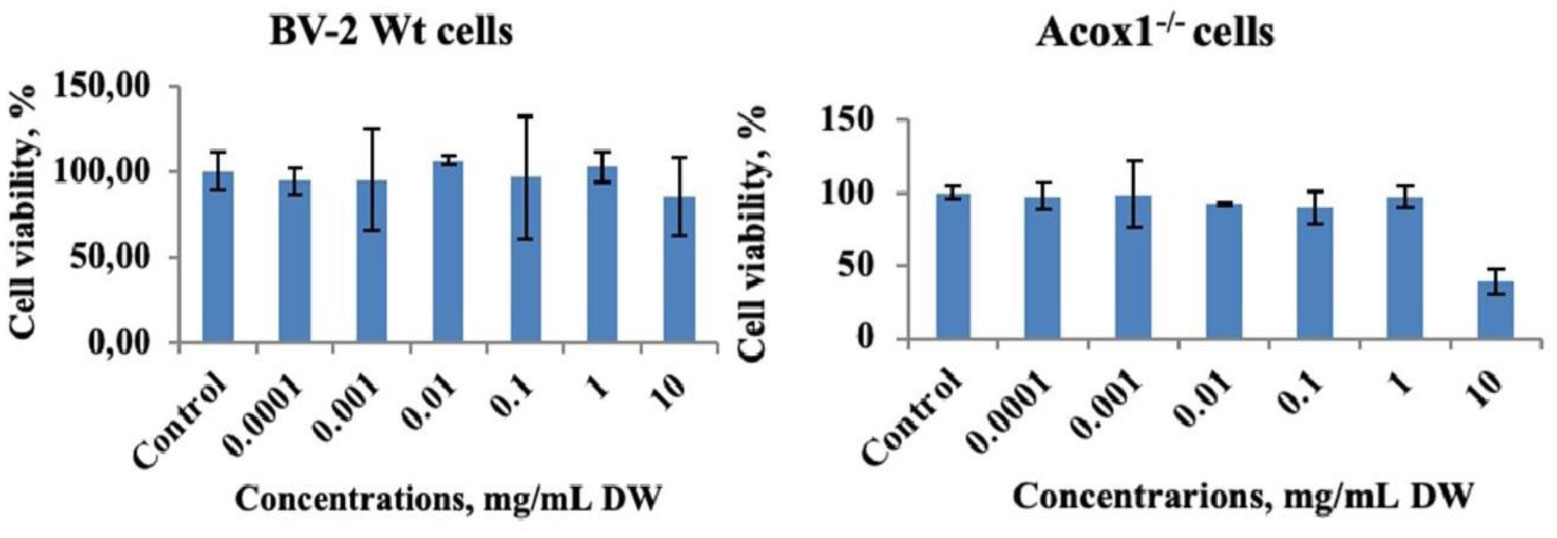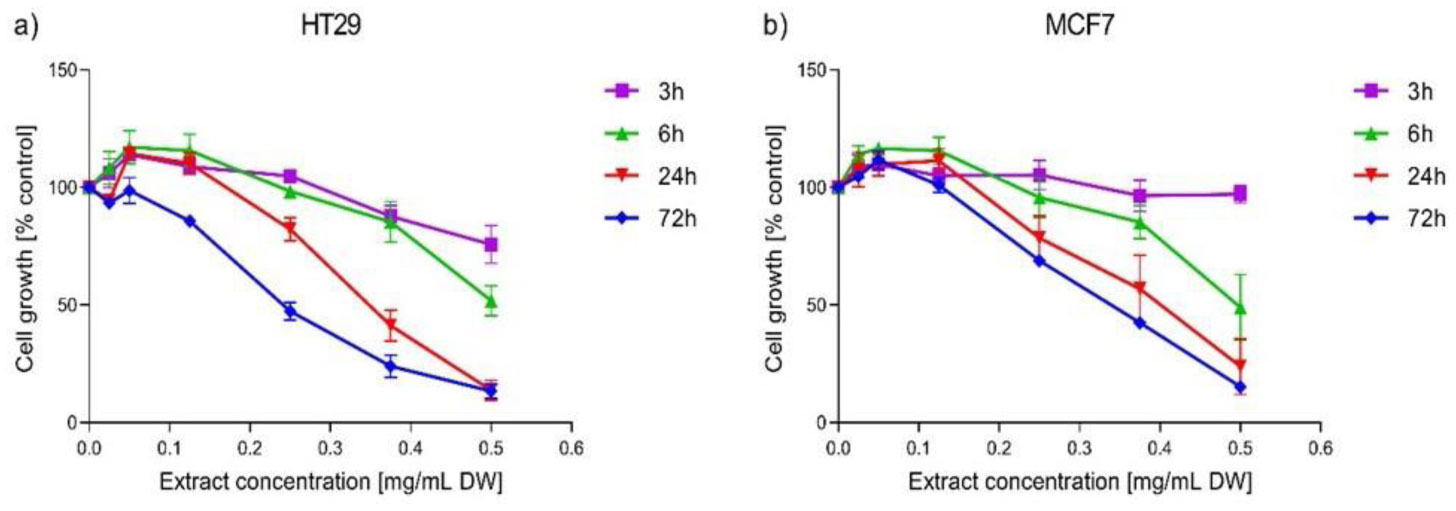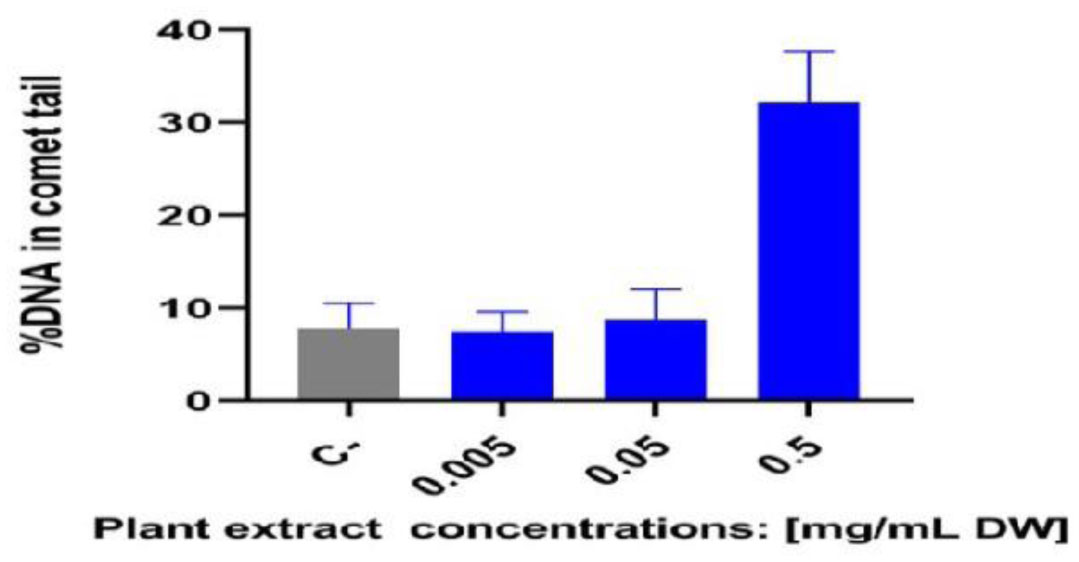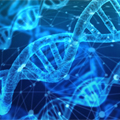1.
Introduction
Herbal preparations have a long-appreciated application, especially in medicine, due to their accessibility, powerful therapeutic value, synergistic effects with numerous clinically important medicines, and few side effects. Despite problems with bioavailability, currently, more than 20000 plant species are used in medicine and food production. On top of it, a huge number of medicinal preparations contain compounds derived from plants [1]–[4].
Ribes nigrum L. (black currant) leaf extracts are known for their beneficial effects on health. Due to their higher content of phenolic components, including flavonoids and anthocyanins, they possess anti-inflammatory, antioxidant, anticancer, analgesic, and hypotensive effects [5]–[8]. The black currant leaf is indicated as beneficial in many conditions, including arthrosis, bite, bladder stone, cancer, cold, cough, diarrhea, dysuria, fever, hepatosis, high blood pressure, infection, inflammation, pain, pertussis, etc. [6]. At the same time, there are no known contraindications for black currant leaf preparations concerning their acute toxicity, genotoxicity, reproductive or developmental toxicity, or carcinogenicity of this plant extract at doses relevant for human consumption [6],[9]. The leaves of R. nigrum are also often used in European conventional remedies for the treatment and prophylaxis of numerous abnormalities in human metabolism [5],[10]. Some investigations showed that the content of biologically active phenolic compounds is much higher in leaf extracts than in corresponding berry fruits [11]. The number of phenolic compounds present in R. nigrum leaf extracts exceeds 19, with epigallocatechin and epigallocatechin-3-gallate as the main antioxidant components [7],[11]–[13].
Bearing in mind the above-mentioned data, we aimed to investigate the influence of the extract obtained from the leaves of Armenian R. nigrum growing at high altitudes on the viability of different cancer and normal cell lines. For this purpose, as non-cancer cells, we applied two types of neuroglial cell lines—BV-2 wild type (Wt) and recently generated acyl-CoA oxidase1 (ACOX1) deficient cells (Acox 1−/−) [14],[15]. The BV-2 Wt cells were used to monitor the influence of the extract on normal cells. The Acox1-deficient microglial cells featured an accumulation of very-long-chain fatty acids (VLCFA) and induction of proinflammatory cytokines, were used as a cellular model of oxidative stress and inflammation, thus potentially responsive to antioxidants [16]–[18]. Since it is well-known that cancer initiation and progression are associated with oxidative stress in the cells, therefore, the BV-2 Wt and Acox−/− cell lines were chosen as models by which it could be possible to clarify whether the influence of the studied extract connected with the redox status of the cells [19],[20].
Human colon adenocarcinoma HT29 and human breast cancer MCF7 cell lines were applied as cancer cell models [21]–[23]. This selection is based on the fact that HT29 cells serve not only as a colorectal cancer model, but also as an in vitro model in research on intestinal absorption, transport, and secretion involving cells that are in direct contact with consumed food components and medicinal preparations administered orally [24]. On the other hand, the application of MCF7 breast cancer cells was related to the high rate of this disease worldwide, including in the Armenian population. According to the WHO data published in 2020, breast cancer deaths in Armenia reached 444 per 100 thousand persons, representing 1.98% of total deaths [25],[26].
2.
Materials and methods
2.1. Chemicals and reagents
All applied chemicals and reagents were purchased from Sigma-Aldrich Co. Ltd.
2.2. Plant material
The plant material (R. nigrum L.) was collected from the Lori province (Armenia, 1600–1650 m a.s.l.) during its fruiting period (July 2019). Plant material was processed according to Hovhannisyan et al. [7]. Extraction was implemented using ethanol as solvent [27]. The obtained dried extracts were stored at 4 °C until further use. For the comet assay and MTT test involving cancerous cell lines, 50 mg DW/mL crude ethanol extract was prepared. The mass concentration of dissolved compounds in leaf extract was determined by drying 500 µL of extract and weighing each sample in three independent replicates. It was equal to 7.8 ± 0.57 mg/mL.
2.3. Cell cultures
Murine microglial BV-2 Wt and BV-2 Acyl-CoA oxidase type 1 (ACOX1) deficient mutant (Acox1−/−) cell lines were provided by the Laboratory BioPeroxIL, University of Bourgogne, Dijon, France. BV-2 cells were from female C57BL/6J mice purchased from Banca-Biologica e Cell Factory (catalog no. ATL03001) were cultured in DMEM supplemented with 10% heat-inactivated FBS and 1% penicillin/streptomycin (Dutscher). Cultures were maintained at 37 °C in a humidified atmosphere with 5% of CO2 [14].
BV-2 is derived from C57/BL6 murine. They are immortalized by v-raf/v-myc carrying J2 retrovirus. BV-2 express nuclear v-myc and the cytoplasmic v-raf oncogene products as well as the env gp70 antigen at the surface level. BV-2 microglia cell line retains microglia morphological and functional characteristics. In accordance with v-raf/v-myc expressed characters, the metabolic and proliferation rate of in vitro BV-2 greatly exceeds that of other microglia. BV-2 cells were seeded on 96-well microplates at 25 × 104 cells per well for viability assay and 6-well microplates at 5 × 105 cells per well—for enzymatic activity determination as described earlier [16],[17].
Human colon adenocarcinoma HT29 and human breast cancer MCF7 cells were obtained from ATCC and maintained in McCoy's or EMEM (Minimal Essential Medium Eagle) medium, respectively, both supplemented with L-glutamine (2 mol/L), sodium pyruvate (200 g/L), fetal bovine serum (100 mL/L), and antibiotics (100 U/mL penicillin and 100 g/L streptomycin) [23],[28]. Cells were maintained at 37 °C under a humidified atmosphere with 5% CO2 in a Smart Cell Incubator (Heal Force, China) as described before by Koss-Mikołajczyk et al. [21]. Cultured cells were periodically checked for mycoplasma contamination (with Mycoplasma Detection Kit (ATCC, Monassas, VA, USA)).
2.4. MTT assay
BV-2 cells, plated in 96-wells plates, were treated for 24–72 h with various concentrations of R. nigrum ethanol extract (0.0001–10 mg/mL DW) and in the final step cell growth was evaluated with 3-(4,5-dimethyltrazol-2-yl)-2,5-diphenyltetrazolium bromide (MTT) assay [29]. By this test we clarified the effect of R. nigrum extract on the viability and mitochondrial activity of the microglial cells.
The following concentrations of R. nigrum ethanol extract: 0.5, 0.25, 0.125, 0.06, 0.03, 0.015 mg/mL DW and exposure time for 3, 6, 24, or 72 h were used for the evaluation of HT29 and MCF7 cell growth inhibition. Treatments were performed as three independent replicates. Cytotoxicity was expressed as the percent cell growth of cells exposed to the plant extract normalized to control cells treated with the appropriate volume of solvent only (1% ethanol in the final mixture whose growth was regarded as 100%).
2.5. Genotoxic effects of R. nigrum leaf extract
Genotoxicity of R. nigrum leaf extract was evaluated using the comet assay [30]. About 105 of HT29 cells were seeded in 24-well plates and treated with the plant extracts at different concentrations for 24 h [23]. Plant extract concentration was selected based on MTT cytotoxicity assay. The mean % DNA in tail was a measure of genotoxic potency of the extract. The damages on nuclei were analyzed with CometScore 2.0.0.38 software (Tritek Corp., Sumerduck, VA, USA). Two independent measurements were performed, in three technical replicates each.
2.6. Data processing
Statistical analyses were carried out by Student-t test and GraphPad Prism 8 software for calculation of the probability values. The statistical significance of the results of genotoxicity was examined by one-way ANOVA followed by Dunnett's test. The results are means +/– SD of three independent experiments. The results were considered statistically different at a p-value of 0.05 or less.
3.
Results and discussion
The viability of cells under the influence of plant extracts is mostly connected with their chemical composition [2],[16],[17],[31]. In our previous investigations, the content of total phenolic and flavonoid in R. nigrum leaf extracts were determined to amount to 84.1 ± 1.6 mg gallic acid equivalents (GAE)/g DW and 35.42 ± 1.52 mg quercetin equivalents (QE)/g DW, respectively. The main components of the extract comprised flavan-3-ols, flavonols, hydroxycinnamates, lignans, naphthols, furanocoumarins and quercetin derivatives [7]. Studies have shown, that extracts rich in phenolic components exhibit high antioxidant activity [17],[31]–[35], which is aligned with our recent findings as the post-column derivatization of analytes with ABTS reagent indicated, that almost all of the major compounds identified in R. nigrum extract with LC-Q-Orbitrap HRMS analysis possess strong antioxidant activity [7] (See also Table 1). These findings served as a basis for further investigations on the influence of this extract on the viability of different cell lines, representing both normal and cancer models in in vitro studies. The results of current investigations showed the low cytotoxicity of the R. nigrum leaf extract on tested BV-2 normal cell lines (Figures 1 and 2), whereas it had considerable growth inhibitory activity against tested HT-29 and MCF7 cancer cell lines (Figure 3). According to the obtained results, the sub-cytotoxic concentration of investigated extract on both BV-2 cell lines was only reached at 1 mg/mL DW concentration (Figure 1). Therefore, it can be stated that the investigated extract did not express toxicity against both BV-2 cell lines. This concentration of the extract was further applied to explore the effect of different exposure times on two BV-2 cell lines (Figure 2).
In case of the BV-2 Wt cells some statistically significant decrease in cell viability was observed after 48-hours of treatment with 1 mg/mL concentration of R. nigrum extract. This was not observed during the treatment of the Acox1−/− cells (Figure 2), which could be due to the activation of some compensatory mechanisms [17]. Any significant changes were not detected in the viability of BV-2 Acox1 cells following 24- or 48-hours' exposure times (Figure 2).
The ethanol extract of R. nigrum leaf showed considerable growth inhibitory effect towards HT29 and MCF7 cancer cell lines (Figure 3a,b) in contrast to the tested non-cancer BV-2 cell lines. In both cancer cell lines; the observed inhibition started from 6 h of treatment at the highest tested concentration (0.5 mg/mL DW) as well as after 72 h beginning from the lowest concentration (0.125 mg/mL DW). The growth inhibitory effect was thus both dose and time-dependent. In the case of the BV-2 Wt and Acox1 non-cancer cell lines, the exposure time had no significant effect on growth inhibition induced by R. nigrum extract. The 3-hour exposure time had only a slight inhibiting effect on the growth of HT29 cells, whereas it had not any influence on the growth of MCF7 cells at any tested concentration.
R. nigrum extract expressed noticeable cytotoxic activity against HT29 and MCF7 cells even at low concentrations. It can be of great interest, that R. nigrum leaf extract exhibited a rather low cytotoxicity against tested non-cancer cell lines in contrast to the documented in our study significant cytotoxicity against tested cancer cell lines. Ziemlewska et al. [36] also showed some beneficial effects of R. nigrum extract on the growth of two other normal cell lines: fibroblasts (BJ) and keratinocytes (HaCaT) at low concentrations and only low cytotoxicity was detected at high concentrations. It was also reported that R. nigrum leaf extract was not cytotoxic toward endothelial and normal kidney MDCK cells [9]. In another research, NCM460 normal colon epithelial cells maintained 90% viability even at 25 mg/mL concentration of R. nigrum leaf extract after 48 h exposure time [37].
Even though data obtained by us confirm that R. nigrum extract expressed strong cytotoxic activity towards tested cancer cell lines, there is very few literature data confirming this phenomenon for other cancer cell lines. Koss-Mikołajczyk et al. [28] showed the strong cytotoxic effect of R. nigrum fruits water extract on HT29 cells after 72-hour exposure time. Also, the noticeable cytotoxic effect on human gastric carcinoma MKN45 cells was reported by Liu et al. [37], however, only following high concentration exposures (about 15 mg/mL). Moreover, it was reported that the leaf extract of R. nigrum had no cytotoxic effect on A549 (lung carcinoma epithelial cell) and HeLa (cervical cancer cells) cells [9]. However, taking into account the obtained data and the presence of several major compounds with previously demonstrated anticancer and cytotoxic properties in the leaf extract of Armenian black currant which were identified in our previous research [7] (See Table 1), we presume that its active phytochemicals could possibly specifically target the cancerous cells. Nonetheless, further studies will be needed to elucidate the mechanisms behind this cytotoxicity and to confirm our presumptions.
To have some insight into the mechanism of cytotoxicity of R. nigrum leaf extract on HT29 cells, additionally, the genotoxicity of this extract was explored with the comet assay. According to the obtained results, R. nigrum extract exhibited some genotoxic activity on HT29 cells at 0.5 mg/mL DW concentration (Figure 4). According to one-way ANOVA with Dunnett's test, there were not observed significant differences between treated and non-treated cells at the lower tested concentrations.
As already mentioned, the extract was genotoxic at the tested highest concentration applied to HT29 cells based on comet assay results. There is no literature data concerning the genotoxicity of R. nigrum leaf extract. Our results are the first-time this phenomena is mentioned in these cell lines. The genotoxicity of the investigated extract in cancer cell lines can be due to the several compounds contained in the R. nigrum leaf extract, especially coumaric acid derivatives or furocoumarins (Table 1). These substances have been reported previously as anticancer agents which are acting through different mechanisms including the induction of DNA damage [43],[50].
4.
Conclusions
Based on the obtained data, the low cytotoxicity of R. nigrum leaf extract towards normal cell lines was confirmed. In contrast, the strong cytotoxic effect of the investigated extract was found against HT29 and MCF7 cancer cell lines. The extract also exhibited genotoxicity in HT29 cell line by inducing DNA fragmentation, which was detected using a comet assay. The presence of bioactive compounds, with possible anticancer and genotoxic properties, suggests the anticancer potential of the studied extract. Nonetheless, further investigations are needed to confirm the selective cytotoxicity and possible action mechanisms of the leaf extract of R. nigrum growing at high attitude in Armenian landscape.










 DownLoad:
DownLoad:






